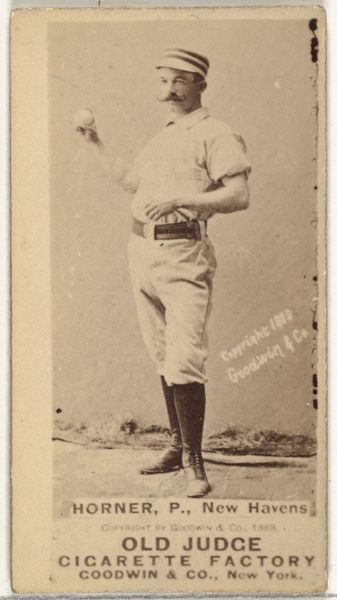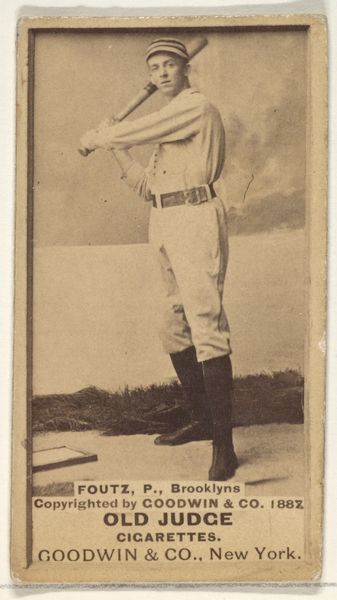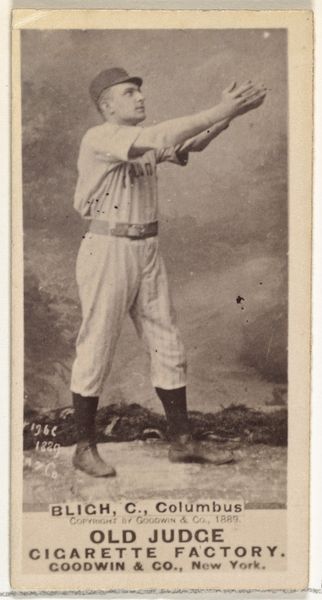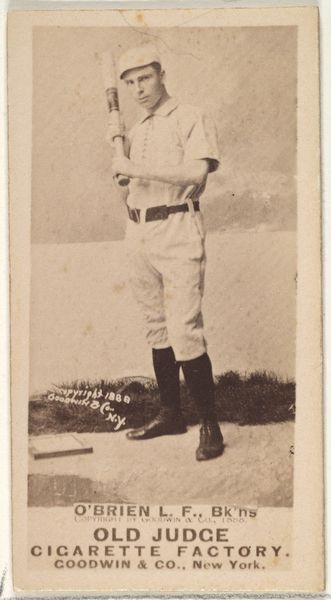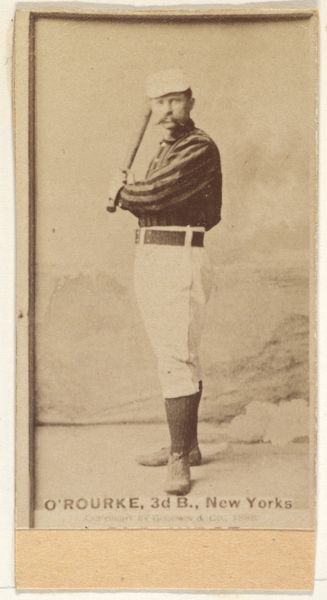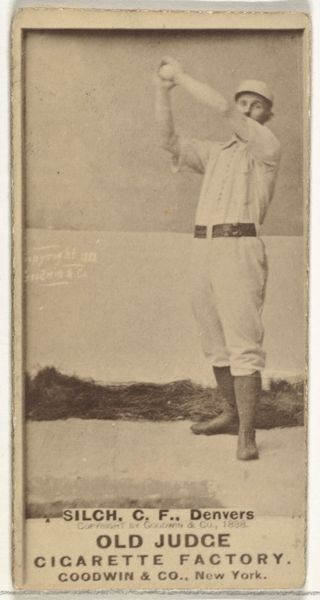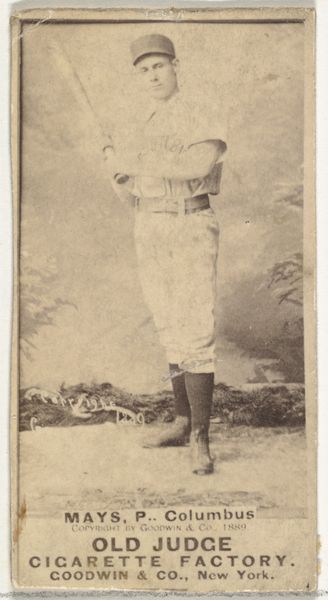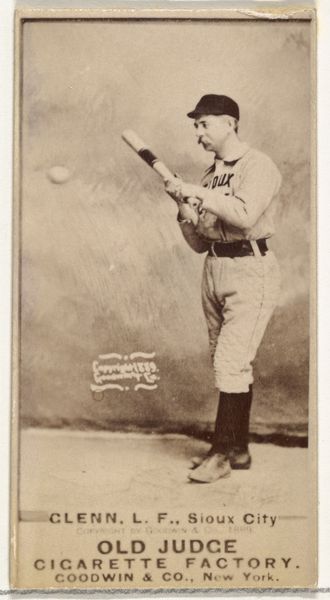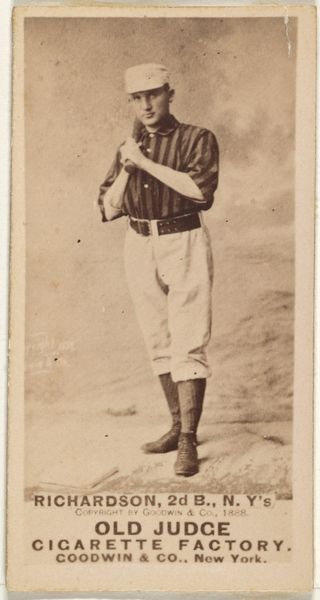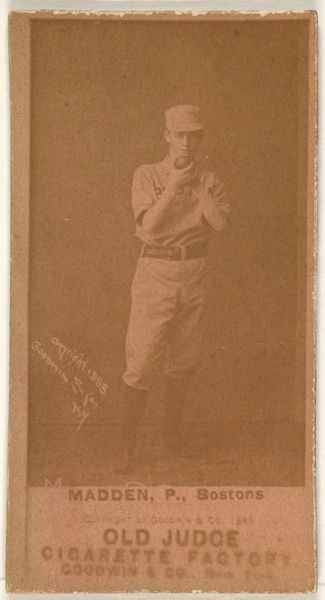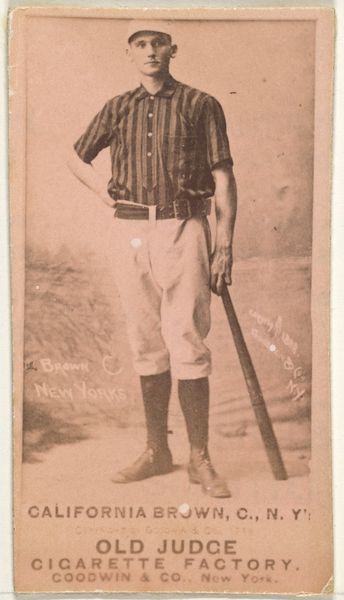
F. Hutchinson, Pitcher, Chicago, from the Old Judge series (N172) for Old Judge Cigarettes 1887 - 1890
0:00
0:00
drawing, print, photography, collotype
#
portrait
#
drawing
# print
#
baseball
#
photography
#
collotype
#
men
#
athlete
Dimensions: sheet: 2 11/16 x 1 3/8 in. (6.9 x 3.5 cm)
Copyright: Public Domain
Editor: Here we have a baseball card, "F. Hutchinson, Pitcher, Chicago," produced by Goodwin & Company sometime between 1887 and 1890, for Old Judge Cigarettes. It's a collotype print, and I'm immediately struck by how…staged it feels. What's your take on it? Curator: This seemingly simple baseball card is steeped in cultural history. Consider the context: the late 19th century. Baseball's popularity was surging, and so was the tobacco industry. These cards, inserted into cigarette packs, served as advertisements and quickly became collectibles, functioning as an early form of mass media. Do you see how this small piece of ephemera speaks volumes about the intersection of sport, industry, and visual culture? Editor: Yes, I see that. But the actual image of Hutchinson… is that just meant to be a straightforward representation? Curator: Not entirely. Think about the controlled pose, the landscape backdrop almost like a studio portrait. While it seems like a direct image, consider who produced it and for what purpose. This is about crafting an image, associating a masculine ideal—the athlete—with the consumption of tobacco. The “Old Judge” brand name itself invokes a sense of authority and tradition. Editor: So it's less about accurately portraying F. Hutchinson and more about selling an image connected to baseball and cigarettes? Curator: Precisely! It's a carefully constructed visual argument. The card’s worth lies not just in its subject matter, but also in what it reveals about the culture that produced it. Editor: I guess I was focusing too much on the baseball aspect and not enough on the cigarette ad part. Thanks! I will definitely have to adjust my analysis, considering baseball's advertising context within society. Curator: Absolutely. And always consider how power structures influence art’s production and dissemination. That’s what I got out of looking at it this way.
Comments
No comments
Be the first to comment and join the conversation on the ultimate creative platform.
